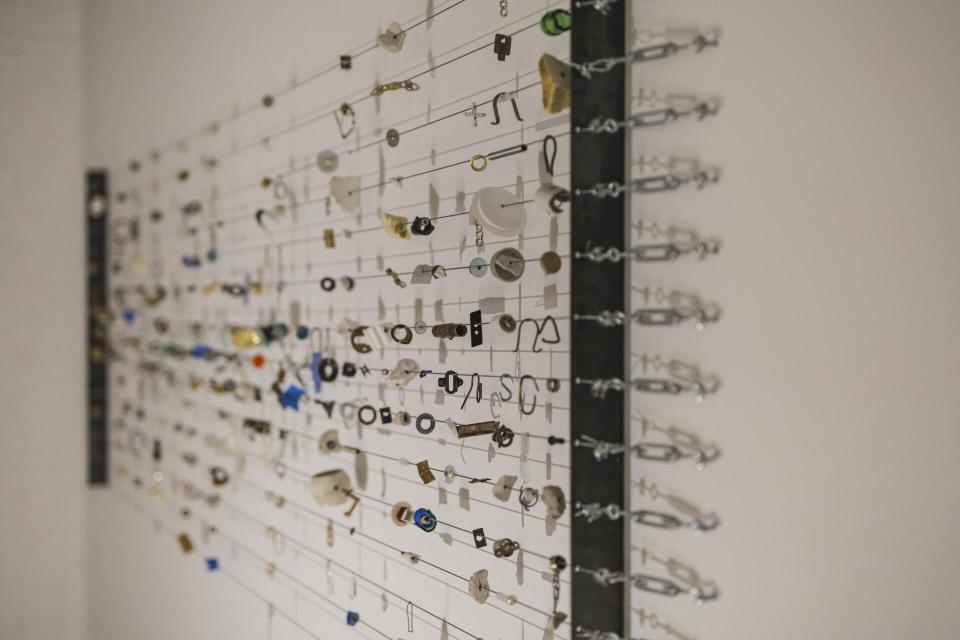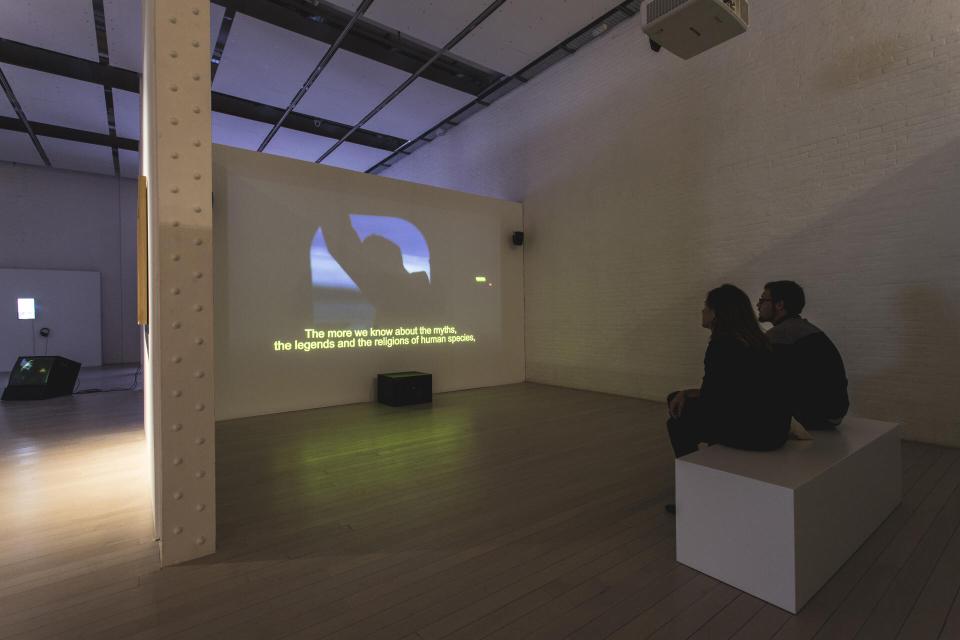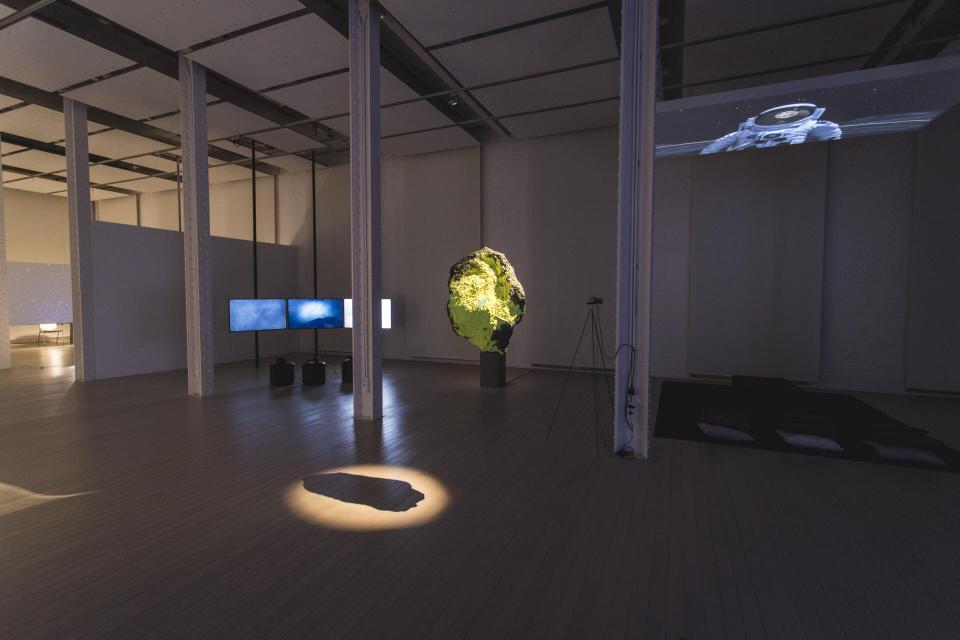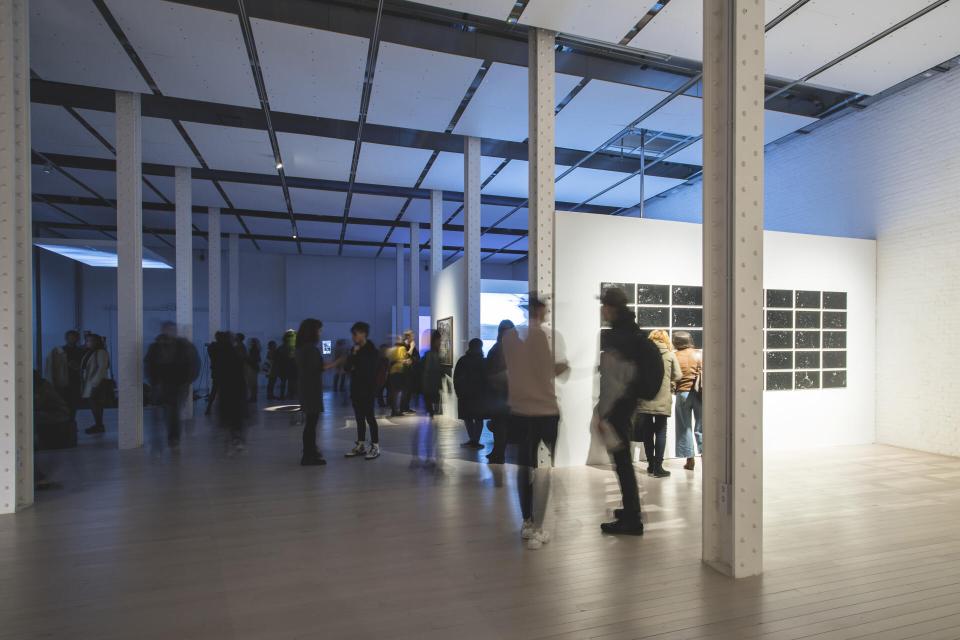One Day I Stumbled Upon a Meteorite
Dates: 13 November 2019 - 19 January 2020
Exhibition Opening: 12 November, at 19.00
Where: 1st Floor
As part of the 2019 edition of the LOOP Barcelona festival, the exhibition gathers together the work of eight artists who use cosmic space as a filter to represent human desires, life on Earth and knowledge. In various formats, the pieces by Regina de Miguel, Irene Grau, Abel Jaramillo, Julia Llerena Iñesta, María Molina Peiró, Francisco Navarrete Sitja, Belén Rodríguez and Pedro Torres reduce the apparent distance between the universe and everyday life. As if walking down the street we were to stumble upon a meteorite.
A series of activities, led by Cris Blanco and curators and researchers Núria Gómez Gabriel and Alexandra Laudo, will also be held. This project, curated by Carolina Ciuti, is produced by LOOP and Fabra i Coats - Contemporary Art Centre.
---
In the short story The Distance of the Moon (1965), Italo Calvino tells us about human will in relation to unattainable goals, fictionalising a universe in which the space that separates us from the satellite also becomes a metaphor for desires, passions and obsessions on Earth.
Directing our gaze towards the starry sky corresponds to that vertical impulse that human beings have always responded to, an impetus of the body that discloses questions about the origin of the world, the need to find an orientation and the inclination to explore. Likewise, and in different historical eras, this ascending action has embodied the form of the utopian dream, of the fear of invasion, to the point of developing features of a future interstellar colonisation.
Since the Space Race era, the possibility of an expansive ‘territorialisation’ of the universe has been related to the uncertainty of the future of life on Earth, thus reducing the seeming distance between the otherness of the cosmos and our daily lives. It is as if the space we inhabit, “infinite, indistinguishable and uniform in all its directions” (according to the Cambridge Dictionary), acquired physical and tangible substance and forced us to wake up from our self-absorbed path.
When the already complex debate about the nature of 'space' exploded at the beginning of the 18th century, as detailed in correspondence between German philosopher Gottfried Leibniz and English philosopher Samuel Clarke3, two of the main positions confronted each other: the rationalist, according to which space corresponded to the relationship of distance or proximity between things, and the absolutist that identified it with an omnipresent entity and partly conducive to something divine. Later, Immanuel Kant would talk about space as an abstract concept that human beings have created to make sense of the world. According to contemporary physics, space-time is explained and represented as a container within which we move and flow, an imperceptible system that determines, organises and affects our existence.
By abstaining from the specificity of the scientific discourse and redirecting the debate to a metaphorical context, the 'spatial gaze' would then offer a way to narrow the distance between the infinitely large and our daily microcosm, while interrogating those issues that touch us closely, according to a reversed movement that from the cosmos would seek the body. As if walking down the street we were to stumble upon a meteorite.
Photo report: Xavi Torrent.













